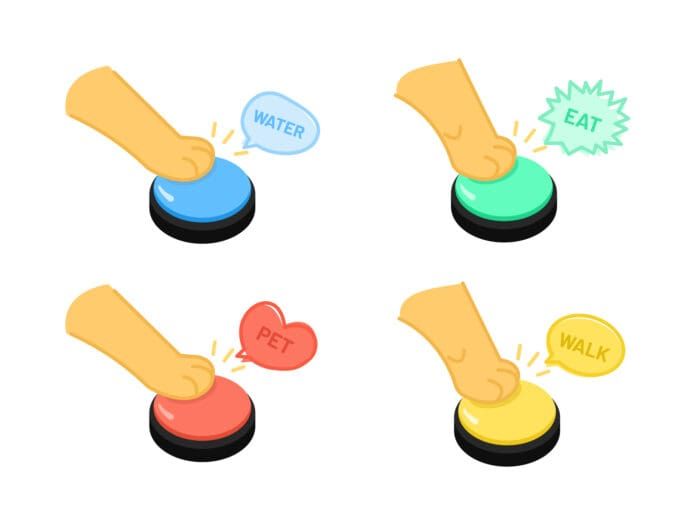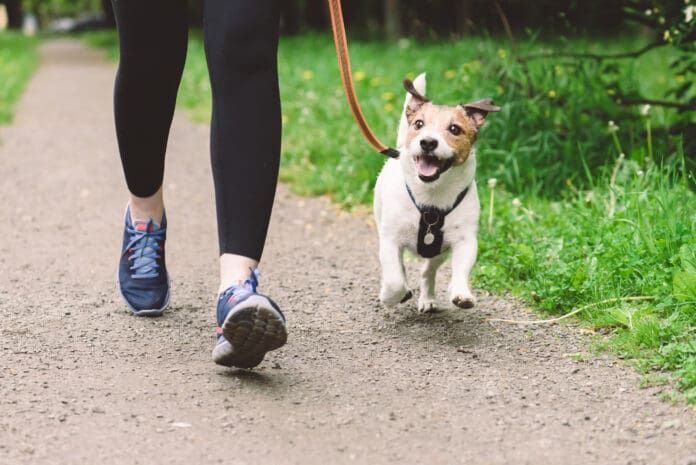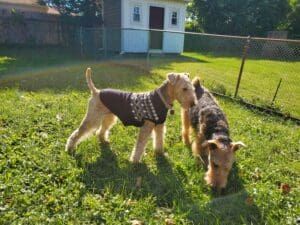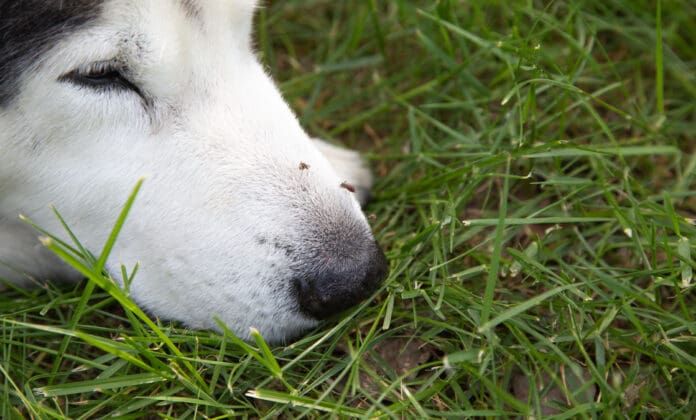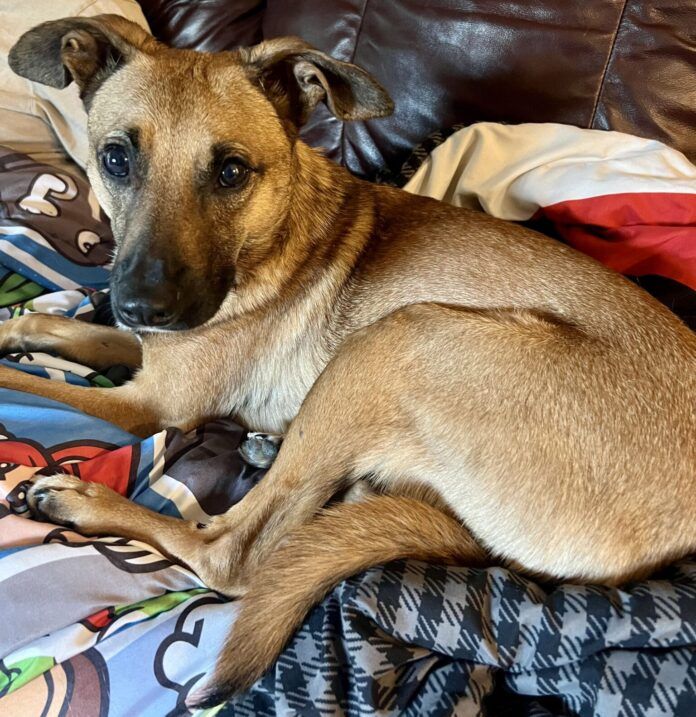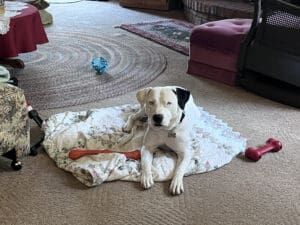Dogs can have many different skin conditions. Some skin problems are minor and easily fixed, while others are trickier to diagnose. Some may be controllable but not curable, while others can be cured. Diagnosing skin problems in dogs takes a good detective, which starts with you, the dog owner. One thing’s for sure, don’t wait if your dog is losing hair or has abnormal skin crusting or scaling.
How To Treat Dog Skin Conditions at Home
It makes sense with any skin condition to begin with basic treatment options, like parasite control if you see fleas. Medicated shampoos, mousses, and creams can help provide many dogs with comfort to relieve itching and act as therapy as well.
If you don’t see immediate results and these simple treatments don’t help, it’s time to bring in the veterinarian—the longer you wait, the more out of control the skin condition may become.
When you get to the veterinarian’s office, be prepared to give as thorough a history as you can, including when and where you think the problem started and any changes in your dog’s life that might help your veterinarian narrow things down to the most likely causes first.
In many cases, skin scrapes and fungal cultures are done. If necessary, antibiotics or antifungals may be prescribed. For difficult cases, cytology, biopsy, and/or bloodwork (for endocrinopathies, more on that below) may be suggested.
Corticosteroids or NSAIDs (nonsteroidal anti-inflammatory drugs) may be used, at least initially, to provide your dog some relief, especially if he is highly pruritic (extremely itchy). While some skin problems aren’t curable, most can be managed to provide a reasonable quality of life for your dog.
Check the Dog for Fleas First

The first step is to rule out external parasites. William Miller, Jr., VMD, emeritus professor of dermatology at Cornell University’s College of Veterinary Medicine, says he has seen that most hair loss in dogs is related to biting, itching, and chewing due to parasites such as fleas and mites.
Some dogs will do minor biting and licking, primarily around the tailhead and in the groin area with a flea infestation, but dogs with a flea allergy will dramatically “go to town” and end up with bare, oozing patches of inflamed skin from even one flea bite. Crusty patches follow as the skin secretions dry up.
How To Tell if a Dog Has Fleas
To check for fleas, look deep into the dog’s coat for small, brown fast-running insects. They can most easily be seen if you roll your dog over and look at the relatively hairless groin area. You can also scruff the hair over your dog’s back while standing on a white sheet of paper or other light-colored surface. Flea dirt, a mixture of flea poop and flea eggs, looks like salt and pepper and feels a bit gritty. If you add a drop of water, it will turn pink from the blood in the flea poop.
Be sure to check all the pets in the household as they can all share fleas. You will need to treat all the pets and the house and will want to consider using a flea preventative.
Mites on Dogs
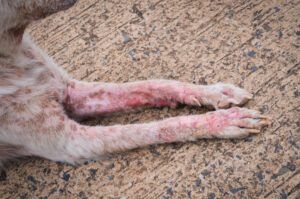
Detecting mites usually requires a visit to your veterinarian for skin scrapings to locate the mites imbedded in the skin. Sarcoptic mange mites cause intense itching but are difficult to find even with a skin scrape. Mites are contagious, so multiple pets may be itching.
If your veterinarian strongly suspects sarcoptic mange, which is caused by mites, he or she may dispense treatment even if no mite is found. Topical treatments have now pretty much replaced the old sulfur baths and dips.
How To Tell if a Dog Has a Bacterial Skin Infection
The Staphylococcus species of bacteria are the most common bacterial skin infections. These can cause patchy crusts and itching on their own or occur secondary after damage from your dog traumatizing his skin. While bacterial infections do respond to antibiotics, the rise of antibiotic-resistant staph species has led to an increased interest in handling these infections with topical therapy, such as medicated baths.
Depending on the severity of the skin condition and if your dog has other health problems, you may need to do both oral antibiotics and baths to get rid of the bacterial infection. A culture to isolate the exact bacterial species involved and determine which antibiotics it is susceptible to may be recommended, especially for severe or recurrent cases.
What Does a Fungal Infection Look Like on a Dog’s Skin?
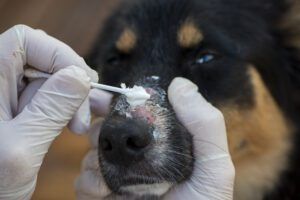
Fungal infections include both ringworm and yeast. Classic ringworm causes round, patchy areas of hair loss, often with dry crusts. (Cats are more susceptible to ringworm than dogs, so check your cats too.) Your veterinarian may use a special light to look for fluorescence and do a culture from a hair in the affected area to make the diagnosis.
How To Treat a Yeast Infection on a Dog’s Skin
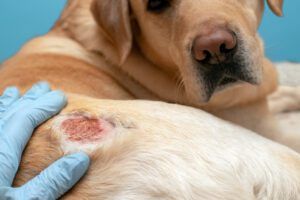
Yeast infections tend to be moist, oozing patches that rapidly expand. Crusts are soft and easily displaced. Typical “hot spots” (moist eczema) are most common in hot, humid weather, often a combination of bacterial and yeast infections. Treatment for yeast and fungal infections generally starts with topicals such as medicated baths, but some dogs will require oral antifungal medications as well.
Seborrhea: Flaky Skin in Dogs
Seborrhea can be the bane of existence for some dogs, just as it is in some people. In dogs, there are two versions of seborrhea. One is primary and has no treatment but can be managed medically. The other is secondary to a different primary skin problem. Once the primary problem is resolved, the seborrhea will clear as well.
Sometimes seborrhea is oily, due to the overproduction of sebum by skin sebaceous glands. In this case, your dog has flaky skin with soft crusts. The hair coat can feel oily when you pet your dog. Dry seborrhea is like dandruff in people with lots of dry skin flakes and crusts. Seborrhea often responds to medicated shampoos.
Other Conditions That Cause Skin Problems in Dogs
Some canine skin conditions come with what appears to be normal skin. In other words, no rash, oozing areas, or itching noticed. Dr. Miller says dysplasia of the hair follicles and endocrinopathies such as Cushing’s disease and hypothyroidism as possible causes of these problems.
Black-hair follicle dysplasia is noted in a wide range of breeds. As expected from its name, it primarily affects black hair. Signs may be evident as early as 4 weeks of age. This is an autosomal recessive genetic trait, meaning it can occur in males and females and both parents, while appearing normal, are carriers of the defect. Other dogs can manifest different variations of hair follicle dysplasia, usually starting slightly older, around 2 to 4 years of age. Unfortunately, there is no treatment for inherited skin problems beyond simply medical management.
Dogs with diseases of the endocrine glands like the thyroid or pancreas that cause hair loss and crusts often require skin biopsies and bloodwork for a definitive diagnosis. These problems can be medically managed, and your dog may return to a normal, or nearly normal appearance. Auto-immune problems can also cause skin eruptions.
As stated earlier, the sooner you get any abnormality on your dog’s skin or hair treated, the better. These infections can spread quickly, and your dog—and you!—will both be miserable.



